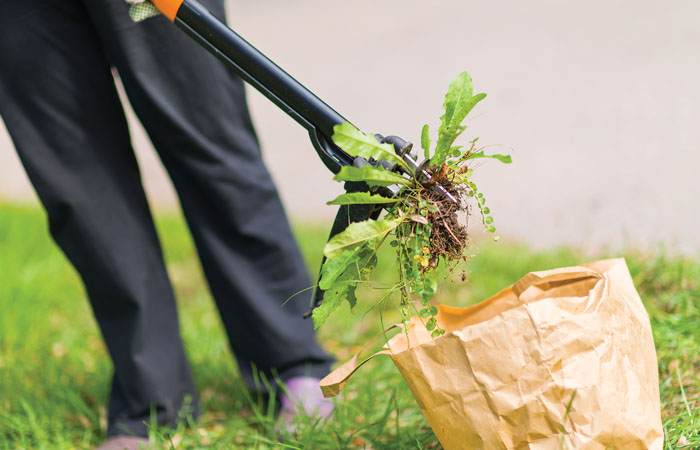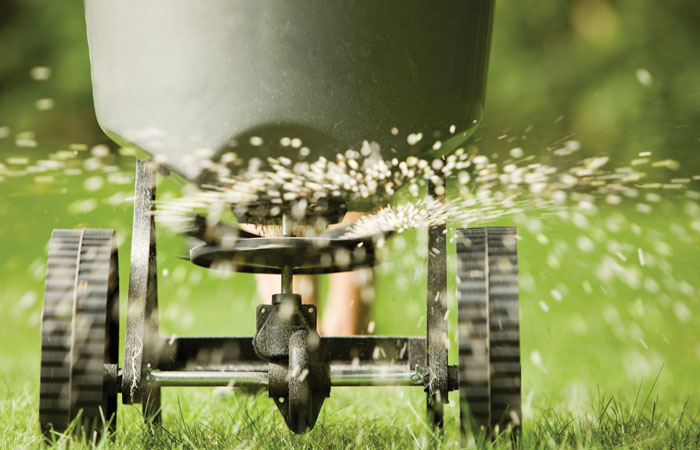Happy Thanksgiving Avid Golfers, and welcome to another fact-filled edition of “Ask the Superintendent.” It has been quite a year for the golf industry in North Texas, and we all have much for which to be thankful.
This month’s question has bounced around the club for quite a while, and it has a lot to do with the housing market in North Texas. Many people ask me this heartfelt question: what is the real value of a home landscape … and how can I increase my property value with landscaping? Holding many green industry certifications and licenses has given me a unique perspective on the value and maintenance requirements of landscapes, both residential and commercial, but for this month’s query, let’s explore the real value of residential or home landscapes.
Real Estate Values and Landscape
Let’s talk generally about how landscapes and gardens impact the value of your home. We will break down some elements of a quality home landscape later, but let’s look at the general percentages and estimated values as determined by leading real estate and landscape experts. A quick Google search on “can landscape increase real estate values?” will yield literally hundreds of responses, and every one of them will confirm that a quality landscape will indeed raise the value of the property. The actual value estimates range from five percent to 20 percent, depending on who vets the number.
A trusted source is the American Society of Landscape Architects, who confirm that homeowners can increase their home value by up to 20 percent by adding beautiful, functional and sustainable landscaping to their property. A few local real estate experts gave me a more modest five percent number. In my experience, the average is around 12 percent, given location and other positive factors that an investment in a quality, functional and aesthetically pleasing landscape will increase the value of your home and decrease the time required to sell, should you place it on the market. The key is to avoid mistakes and create a space that achieves a few landscape goals, such as privacy and overall beauty.
Now that we have shown you the potential value to keep reading, let’s dig a little deeper into what works and what does not work when it comes to impacting your property’s value through landscaping.

Mistakes that Decrease Home Values
There are many ways to make mistakes when you start a new landscape project, especially when the goal is to add value to your property. I would say securing a landscape architect or designer with proven success in your area is a great first step. However, if you are a committed DIYer (Do-It-Yourselfer), take heart; it is not impossible to find the road to a better, more valuable landscape on your own.
Let’s start with some Landscape Don’ts. These will not be shocking, but as you drive around North Texas examples are everywhere that will confirm these tips. Apologies if this hits too close to your current home.
The first landscape value killer is weeds (any plant growing out of place) or overgrown plantings. A landscape should be maintained properly, and nothing says out of control like an overgrown hedge and a lawn full of weeds.
Next on the list of don’ts is poor drainage. Your property should not hold unwanted water but should be able to drain a rain event relatively quickly and certainly no more than a few hours for the water to pass through your property. Standing water is also a mosquito breeding ground, as well, so even with North Texas heavier clay soils drainage and surface water movement are keys to a valuable landscape.
Severe slopes are another killer to landscape values, so consider grading, terracing or retaining walls for a redesign and leveling of the site. Be aware that North Texas soils are tough on retaining walls and fences. Too many plants and/or poor plant placement (large plants in a small place) is another mistake that turns potential buyers away and drives home values down. Lack of or broken irrigation, especially in hot, dry climates (like North Texas) can be a red flag for obvious reasons. If you cannot keep your landscape alive or the level of maintenance required for your landscape is too high, your landscape can shift from asset to liability.
Lastly, rotting or failing decks or cracked driveways or patios are a huge negative and must be addressed. This also applies to anything that requires painting. These items should be maintained to a high level of appearance and function. There are a few other honorable mentions in the landscape mistake category, such as poor exterior lighting, too much lawn art and the legendary overuse of concrete, stones or synthetic turf.
The list of don’ts can easily become a to-do list, so I think by now you are ready to move on to the things that actually do add value to your landscape. Let’s take a walk through the garden of possibility, shall we?

Landscape Should Add Beauty, Function and Value
The first thing a landscape expert and a real estate agent will agree upon when it comes to a valuable home landscape is that it must be simple, functional and beautiful. With just a little guidance, you should be able to choose wisely on basic landscape decisions, whether you are a novice or seasoned home landscaper.
First, get the site right. Handle drainage issues, severe slopes, entry points and repair or replace damage to basic hardscapes (sidewalks, driveways, decks and patios), cracks or heaving/settling must be addressed. Be sure to note sun/shade areas or anything that will impact the growing environment of your plantings. Healthy plants are the byproduct of a proper environment.
Next, set a priority for selecting primary or foundation trees and shrubbery. All home landscapes should feature these key plantings, and they should be designed to enhance the buildings and property in size (maturity height and width) and texture. Generally, home buyers want to see large deciduous trees (maples, cottonwood, elms), along with evergreen trees (pines, live oak, cedar) with 3’ to 5’ well-formed foundation shrubbery (dwarf yaupon or other hollies, ligustrum and boxwood) with colorful accents of annual plants (vinca, begonia and zinnia in summer and pansies, viola and dusty miller in the winter) that are healthy and well maintained.
Landscape plantings, as a rule. are done in odd numbers (1,3,5,7 etc.) and should be planted as to allow them to fill but not overgrow the intended space. It is also important to dig the right size hole when planting shrubs and trees. For shrubs, the hole should be roughly two times the size of the container the shrub is growing in, and for trees the rule of thumb is three to four times the size of the container or root ball. We are assuming that your soil is healthy and well drained. but if you are not sure about soil quality and health, then taking a soil test to identify amendments needed and fertility strategies is very valuable. For information on taking a soil sample, go to http://soiltesting.tamu.edu. Pots and/or raised beds are great options if your soil is an issue, while adding another element to your landscape.

Landscape ROI, Trends and Covid-19 impacts
Return on investments for landscape projects vary. But remember we stated that landscapes can add five to 20 percent more value to your home, so on a $300,000 home that could mean between a $15,000 to $60,000 increase in value. So budget your projects accordingly.
The increased equity only partially explains the recent trends in the growth of landscape enhancements. The other very recent factor is that since the Covid-19 pandemic, people have spent much more time at home and wanted to craft personal spaces that add a new meaning to what it’s like to home quarantine. The landscape industry has since seen record growth and expanded its list of offered projects and services. Some of the latest trends include outdoor kitchen areas that feature brick pizza ovens and elaborate fire pits; pools, spas and water features, including koi ponds and other exotic elements. Intricate outdoor lighting has transformed traditionally day areas into nighttime spectaculars.
Gardens for organic food production and pollinator habitat have also become popular. Environmental elements throughout the landscape, including habitat plantings, rain barrels and nest boxes, are suddenly very popular. My personal home garden produces blueberries, strawberries, figs, sage, oregano, basil, peppers, tomatoes, okra, mint, lavender and lemon grass, and my bird house is occupied by a pair of eastern bluebirds.
There really is no limit to how creative or sensible you can get with your landscape or outdoor spaces. Just remember to check local ordinances and plan your budgets closely to ensure your assumptions are reasonable and your outcomes add value to your property.
I hope that you found this information useful and timely. Thank you all for being loyal readers, and I hope that you will take advantage of the great fall weather, have a safe and joyous holiday season and, of course, play lots of golf.